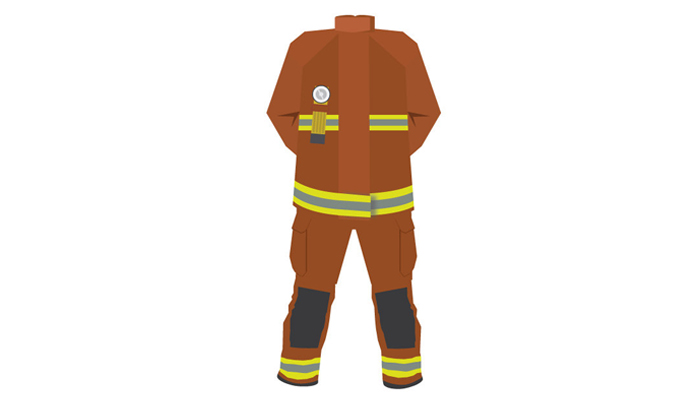
In 1866, Chief Fire Officer Captain Sir Eyre Massey Shaw introduced a new uniform consisting of a blue double-breasted serge tunic and trousers.
Each firefighter would have carried an axe and a hose spanner.
The firefighter would also wear a number on their tunic. This number represented a person's rank and the number decreased as their seniority increased.

In 1914, rubber leggings were introduced.
The woollen trousers were easily waterlogged and became very heavy as a result.
The new rubber leggings kept legs dry, and were much lighter than wool when wet.
In 1974, the wool tunic stayed but the black rubber leggings were phased out and replaced with the iconic yellow leggings.
The bright yellow leggings helped with visibility in smoke filled rooms.

The first Nomex suit was introduced in 1989.
The fabric offered far greater protection from the heat and flames of the fire and was waterproof.
These were the first suits that had the same protection in the coat and the trousers.

In 1999, the Inferno was phased into service.
This maroon suit was more pliable and heat resistant than the previous suit. This allowed firefighters easier movement and the ability to stay in hot conditions for longer.
The suit has three layers: fireproof, waterproof and thermal protection.

Introduced in 2010, this personal protective equipment (PPE) was made of the lightest, most protective materials possible at the time.
The Ergotech Action design included many features to increase the comfort for firefighters, such as action pleats, shaped sleeves and knees.

The 'gold standard' of modernised personal protective equipment (PPE) reflects the changing role of the modern firefighter.